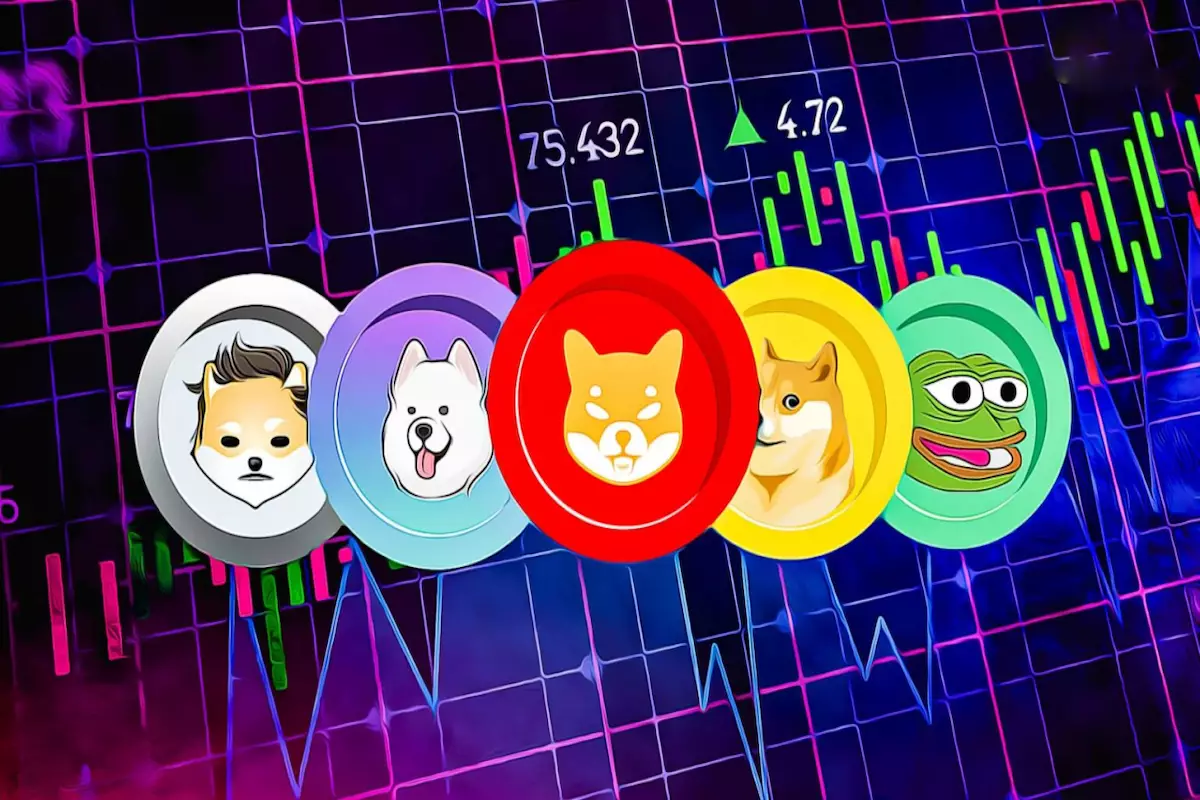The rise of memecoins within the cryptocurrency landscape reflects a remarkable transformation from humble beginnings to potentially significant economic players. Originally created as light-hearted representations of internet culture, memecoins have captured the imagination—and investment—of millions. However, as we enter 2025, it’s essential to dissect the trends that will reshape this sector, ultimately determining whether these tokens can transition from speculative assets to fundamental components of the digital economy.
One of the primary drivers behind the popularity of memecoins is their inherent appeal to human psychology. The thrill of a potential “get rich quick” scenario fosters a sense of excitement that lures investors into putting their money in these tokens. This frenzied rush to capitalize on perceived lucrative opportunities has turned social media platforms like Twitter and TikTok into hotbeds for memecoin announcements and promotions. Influencer endorsements amplify these emotions, creating a potent combination that fuels speculative behavior among everyday investors.
Moreover, the community aspects of memecoins create a unique ecosystem that encourages collaboration among like-minded individuals. As investors come together to share memes, discuss potential price movements, and band together under the banner of specific tokens, they cultivate not just a financial investment but a shared identity. This community-driven approach has further solidified the importance of memecoins, as those who become part of these groups often find themselves emotionally invested in the success of their chosen assets.
As we project into 2025, one prevailing trend is the integration of memecoins with cutting-edge technologies such as Non-Fungible Tokens (NFTs). By marrying the two sectors, developers are providing added value and functionality that characterizes this next wave of cryptocurrency. The launch of projects like Non-Playable Coin (NPC) and Memecoin (MEME) indicates a burgeoning synergy that transcends traditional trading paradigms, offering tangible benefits to community members.
The incorporation of NFTs into memecoin projects could create new avenues for user engagement. Enhanced functionality may allow token holders to participate in exclusive events, gain access to unique digital merchandise, or become part of interactive experiences, thereby fostering deeper ties to the ecosystem. This blend of functionality and community enhances the sustainability of these projects.
Another significant trend is the migration of memecoins into the metaverse—a digital environment rife with opportunity for creative engagement and economic growth. As these virtual realms expand, they present an ideal backdrop for memecoin usage, allowing for immersive experiences that meld entertainment with investment. Memecoins such as those functioning within the metaverse could foster unique economic activities, enhancing their significance in both the crypto and gaming markets.
Projects that establish a foothold in these digital spaces could harness the metaverse’s potential to create new revenue streams and interactions that resonate with users. As various platforms adopt memecoins for transaction purposes, their relevance could solidify—ultimately driving broader adoption in both gaming and trading.
Artificial intelligence (AI) represents another frontier for memecoins, enabling more advanced development, targeted marketing strategies, and enhanced user experiences. Innovations like AstroPepeX (APX) are entering the market, harnessing AI to drive tokenomics and community involvement. By employing AI-generated memes or automated marketing campaigns, these projects could diversify their appeal beyond traditional investment circles.
Additionally, gamification elements are emerging as a vital strategy to engage users. Memecoins embedded in play-to-earn ecosystems—such as Pikamoon (PIKA) and PlayDoge—illustrate how integrating gaming mechanics can invigorate a burgeoning market. By rewarding players with tokens for participation, these projects merge the worlds of finance and entertainment, crafting a more appealing proposition for users and investors alike.
At the heart of many successful memecoin projects lies a strong, involved community. Projects like Dogecoin (DOGE) and Shiba Inu (SHIB) have maintained relevance and strength amid market fluctuations primarily due to their active supporters. This community aspect often translates into governance models that empower users, lending a sense of ownership that distinguishes memecoins from traditional cryptocurrencies.
Such governance allows projects to adapt to user interests and market conditions, increasing their appeal among long-term investors. By prioritizing community engagement, memecoins can cultivate a loyal base that sticks with them through the inevitable ups and downs of the crypto landscape.
Despite the attractive prospects, memecoins must navigate a myriad of challenges, including regulatory scrutiny and market volatility. As authorities begin to impose stricter regulations on cryptocurrencies, transparency must become a cornerstone of memecoin operations. Maintaining robust security measures will also be imperative to reassure investors and protect against scams and fraud.
As innovation continues to flourish in this unique niche, the potential for memecoins to adapt, evolve, and thrive remains tantalizing. If they can overcome regulatory hurdles and maintain their sense of community, the future could indeed be bright for these playful yet powerful tokens.
The landscape of memecoins is set for an exciting evolution in 2025. With promise emanating from technological advancements, community involvement, and adaptive strategies, these digital assets are poised to become central figures in the broader cryptocurrency economy.
















Leave a Reply